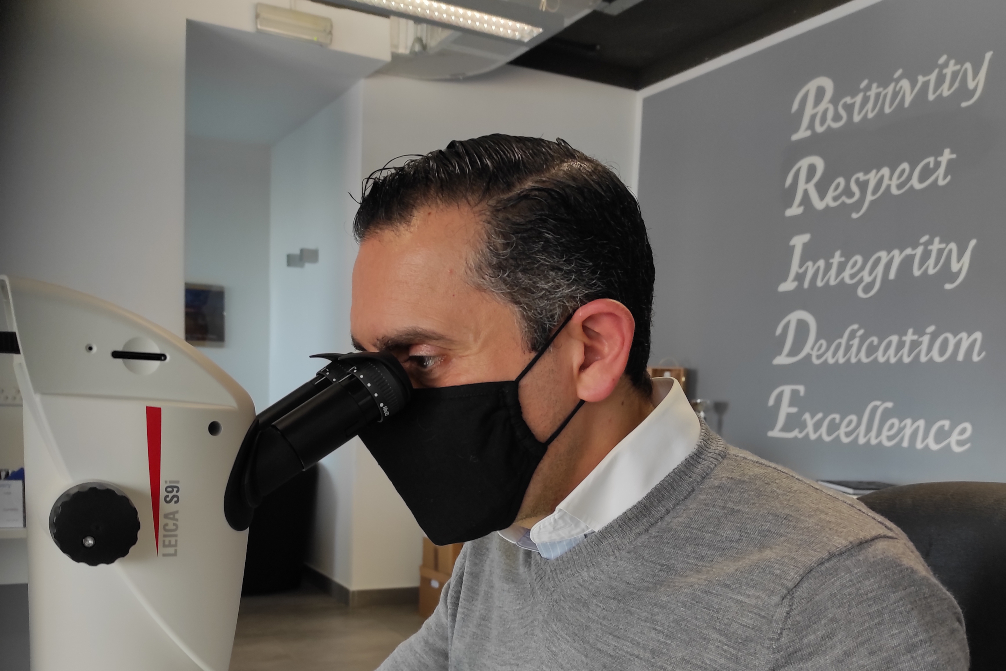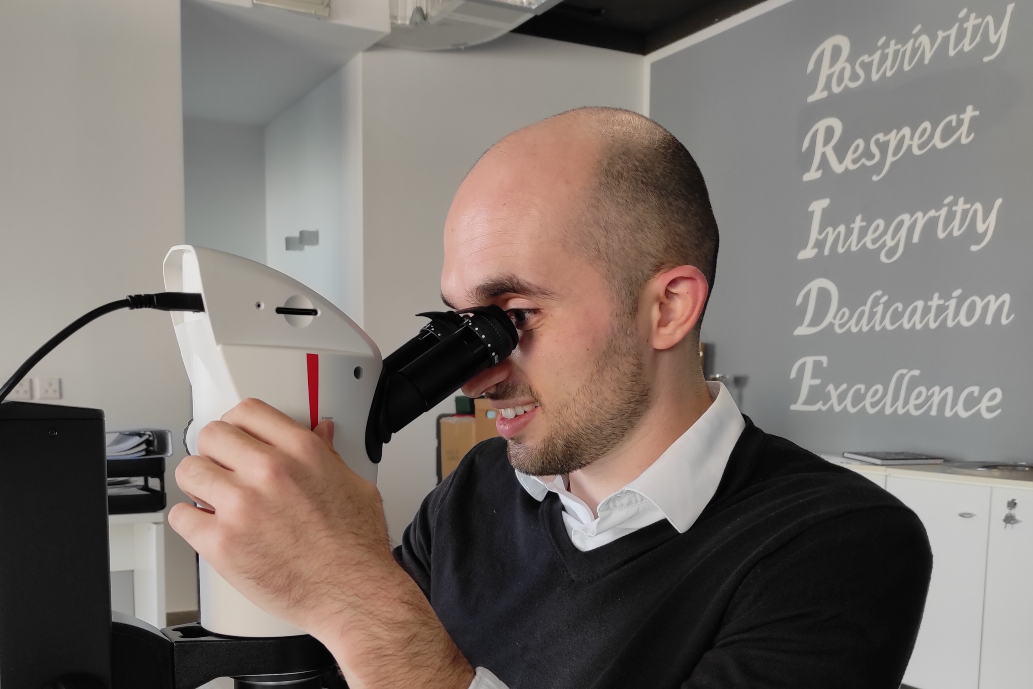So much of the world around us is influenced by what we cannot see – that is without microscopes.
These instruments have been helping us observe and learn from the smallest aspects of nature for hundreds of years now.
Microscopes are a key piece in just about every lab, where they enable scientists in many different fields. Whether it is to get a closer look at electronics, forensics, organisms, or diagnosis tests.
The progress that all these scientists achieve is dependent on the tools they have at hand, that is why at Evolve, we give microscopes so much importance.
Today, microscopes have advanced a lot and there is a great diversity in what they can do.

How do I choose a laboratory microscope?
The basic components of an optical microscope consist of optics, a stage to support the specimen, and a source of light; however, these features can be very simple to highly complex, depending on your needs and budget.
A state-of-the-art design can feature multiple illuminators, polarizers, DIC and phase contrast options, fluorescence attachments, automatic exposure control, and zoom capabilities.
Since the objectives determine the image quality that the microscope can produce, it makes sense to start with one that will eliminate most optical aberrations. Types include plan achromat, semi-apochromat, and apochromat, as well as water and oil objectives.
Depending on your application, additional features to look for may include high numeric apertures, long working distances, objectives that permit multimode imaging, digital and advanced motorization capabilities, and updated illumination systems.
To determine which type of microscope is right for you, it is important to think about what you will be observing.

Compound Microscopes
Compound microscopes are what most people think of when they hear the word ‘microscope’. Compound microscopes use slides, offer high magnifications and are used to observe very small specimen such as cells and organisms in pond water for the Biological microscopes and one can observe cross sections of circuit boards with Metallurgical microscopes or thin sections of rock with Polarizing microscopes.
Stereo Microscopes
This type of microscope allows you to observe large specimen such as leaves, rocks, flowers, insects, gems and more. Stereo microscopes don’t require high magnification and are much easier to operate. These are a good choice for production facilities, manufacturing plants that require immediate inspection and educational studies that require a lower magnification where a specimen is not.
Inverted Microscopes
Inverted microscopes are available as biological inverted microscopes or metallurgical inverted microscopes. Biological inverted microscopes provide magnification of 40x, 100x and sometimes 200x and 400x. These biological inverted microscopes are used to view living samples that are in a petri dish. An inverted microscope allows the user to place the petri dish on a flat stage, with the objective lenses housed beneath the stage. Inverted microscopes are used for in-vitro fertilization, live cell imaging, developmental biology, cell biology, neuroscience, and microbiology. Inverted microscopes are often used in research to analyze and study tissues and cells, and in particular living cells.
Polarizing Microscopes
Polarizing microscopes use polarized light along with transmitted and, or reflected illumination to examine chemicals, rocks, and minerals. Polarizing microscopes are utilized by geologists, petrologists, chemists, and the pharmaceutical industry on a daily basis. All polarizing microscopes have both a polarizer and an analyzer. The polarizer will only allow certain light waves to pass through it. The analyzer determines the amount of light and direction of light that will illuminate the sample. The polarizer basically focuses different wavelengths of light onto a single plane. This function makes the microscope perfect for viewing materials.
Metallurgical Microscopes
Metallurgical microscopes are high power microscopes designed to view samples that do not allow light to pass through them. Reflected light shines down through the objective lenses providing magnification of 50x, 100x, 200x, and sometimes 500x. Metallurgical microscopes are utilized to examine micron level cracks in metals, very thin layers of coatings such as paint, and grain sizing. Metallurgical microscopes are utilized in the aerospace industry, the automobile manufacturing industry, and by companies analyzing metallic structures, composites, glass, wood and ceramics.
If you are unsure which type of microscope might be best for you, get in touch with one of our experts at Evolve. We’ll be happy to advise you on the right equipment for your next project.
Good to know
Be the first to hear our latest news, ideas and initiatives from the team at Evolve
Let’s get social
Follow us on Facebook to keep up to date with all the latest news, information and offers from Evolve


